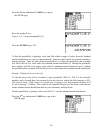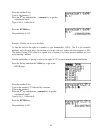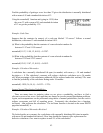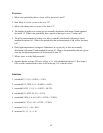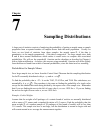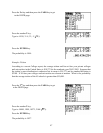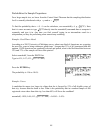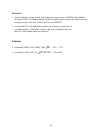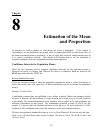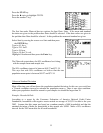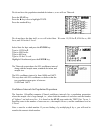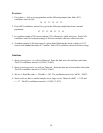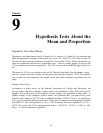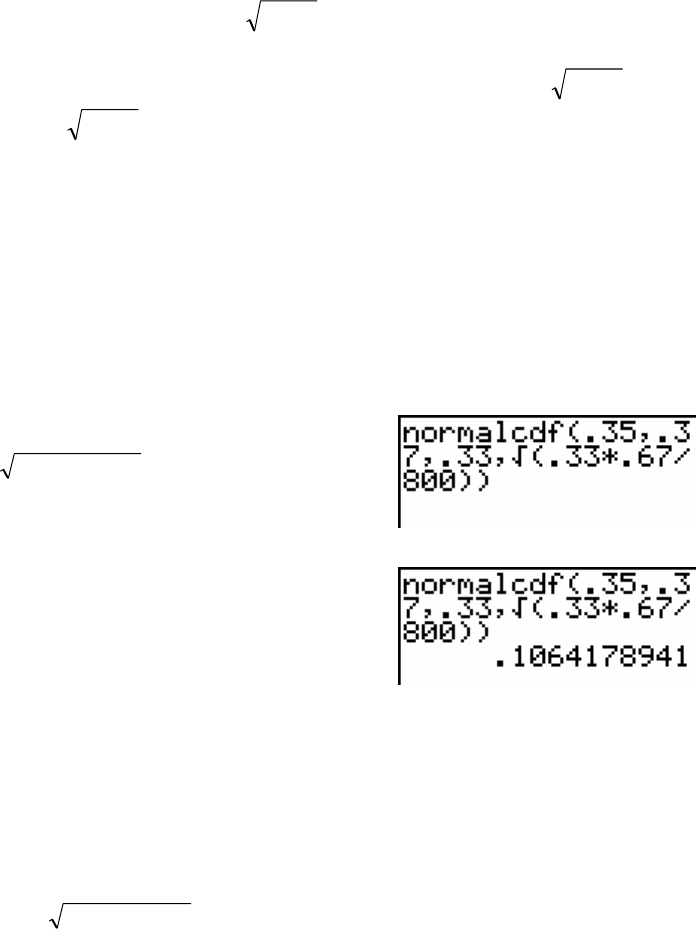
Probabilities for Sample Proportions
For a large sample size, we know from the Central Limit Theorem that the sampling distribution
for ê is normally distributed with µ
ê
= p and σ
ê
=
npq /
To find the probability that a < ê < b on the calculator, use normalcdf(a, b, p,
npq /
). Note
that it is more accurate to type
npq /
directly into the normalcdf( command than to compute it
separately and type it in. Any time you find yourself typing in an intermediate result in a
computation you may be performing some unnecessary rounding.
Example: Good Times Ahead
According to a 2002 University of Michigan survey, about one-third of Americans are expecting
the next five years to bring continuous good times. Assume that 33% of all Americans hold this
opinion. If 800 Americans are randomly selected and polled, what is the likelihood that between
35% and 37% of the sample will have this opinion?
Select normalcdf( from the DISTR list.
Type in 0.35, 0.37, 0.33,
800/67.*33.)
Press the ENTER key.
The probability is .106 or 10.6%
Example: Voters
A candidate for mayor in a large city claims that she is favored by 53% of all eligible voters of
that city. Assume that the claim is true. What is the probability that in a random sample of 400
registered voters taken from this city, less than 49% will favor the candidate?
normalcdf(−1E99, 0.49, 0.53,
400/47.*53. ) = 0.0545 = 5.45%.
48



